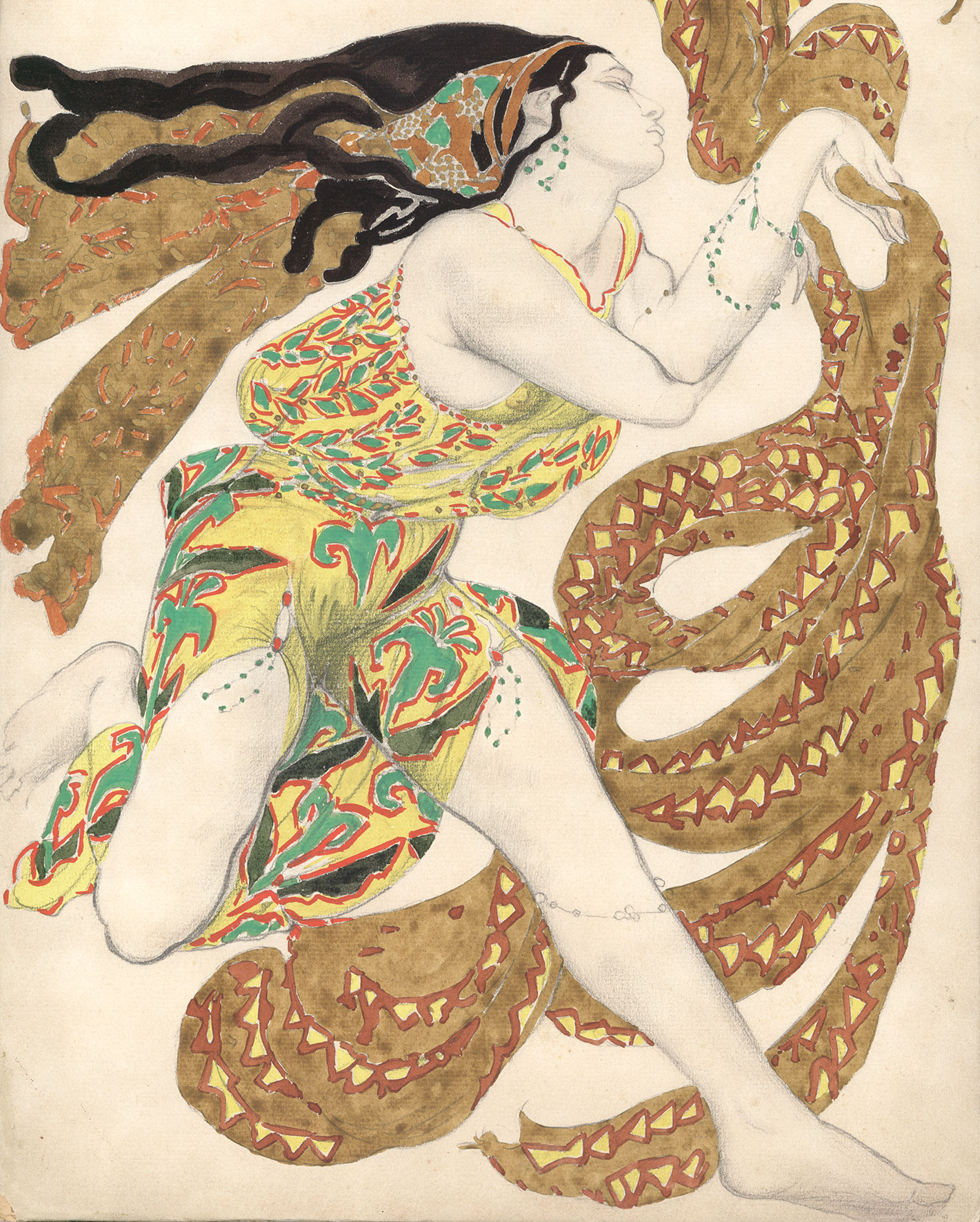
Narcisse, Ballets Russes, coreografia di Michel Fokine, 1911. © St Petersburg State Museum of Theatre and Music

Narcisse, Ballets Russes, coreografia di Michel Fokine, 1911. © St Petersburg State Museum of Theatre and Music
4 OCTOBER – 19 NOVEMBER 2018
VENICE, PALAZZO CINI GALLERY
The exhibition explores the career of the renowned Russian artist and
set and costume designer, who made a reputation thanks to his innovative
creations for Sergei Diaghilev’s celebrated ballet company. The
result of a joint project by the Cini Institute of Theatre and Opera and
the St. Petersburg State Museum of Theatre and Music, which has the
largest collection in the world of Bakst’s set and costume designs, the
exhibition is being staged in collaboration with the Centre for Studies
on the Arts of Russia (CSAR) at Ca’ Foscari University, Venice and is
part of the “Russian Season in Italy”, organised by the Russian Ministry
of Culture. The exhibition itinerary documents a large part of Bakst’s
artistic production: after some little-known early works for productions
such as Marius Petipa’s Le Coeur de la Marquise (1902) and some Greek
tragedies (Euripides’ Hippolyte and Sophocles’ Oedipus at Colonna and
Antigone; 1902-1904), the heart of the exhibition features the celebrated
creations for the Ballets Russes, including those for Cléopâtre (1909),
L’oiseau de feu (1910), Carnaval (1910), Narcisse (1911), Le Dieu bleu
(1912), and Daphnis et Chloé (1912). In addition to these materials,
there is a selection of costume designs mainly created between 1910 and 1911 for ballets such as
Thaïs, La Traviata, Faust, Martyre de St. Sébastien and Manon Lescaut. The exhibition is completed
by a rich series of photographs and original costumes, a fundamental aid in reconstructing the
much-acclaimed artist’s multifaceted activities. Léon Bakst (1866-1924) was educated in St.
Petersburg and Paris. With Sergei Diaghilev and Alexandre Benois, he founded Mir iskusstva,
the magazine in which he published his first graphic art works. In 1902, he began working as a
set and costume designer for the St. Petersburg imperial theatres. Albeit with rifts and reconciliations,
his collaboration with the Ballets Russes lasted from 1909 almost throughout his career

Narcisse, Ballets Russes, coreografia di Michel Fokine, 1911. © St Petersburg State Museum of Theatre and Music